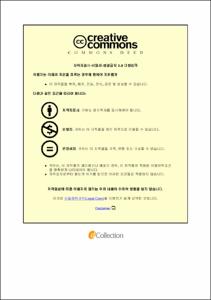관상 동맥의 만성 완전 폐쇄 병변에 대한 관상 동맥 중재 시술과 약물 치료의 장기간 예후 비교
- Abstract
- 배경: 장기적 예후 측면에서 관상 동맥의 만성 완전 폐쇄 병변에 대한 관상 동맥 중재 시술의 이점은 논란이 있다.
목적: 본 연구는 관상 동맥의 만성 완전 폐쇄 병변에 대한 치료법으로 관상 동맥 중재 시술과 최적의 약물 치료의 장기간 예후를 비교하고자 한다.
방법: 2003년 1월부터 2018년 12월까지 총 3,248명의 관상동맥 만성 완전 폐쇄 병변을 가진 환자를 대상으로, 관상 동맥 우회 수술을 시행 받은 502명의 환자는 제외하고, 관상 동맥 중재 시술을 받은 1,837명과 최적의 약물을 받은 909명의 환자로 양분하여 분석을 진행하였다. 주 관심 결과는 사망, 자발성 심근 경색, 뇌경색, 혹은 반복적 재관류 시술의 합산이다. 성향 점수 보정을 통해 기본 특성이 비슷한 환자의 코호트를 구성하였다.
결과: 성향 점수 보정 이후 총 653 쌍의 환자군을 형성하였고, 주 관심 결과의 보정 위험도는 약물 치료군과 비교하여 관상동맥 중재시술 군에서 유의하게 낮았다. (위험도 0.57; 95% 신뢰도: 0.46~0.72, p 값 < 0.001). 이러한 치료 이득은 주로 사망률의 감소 (위험도: 0.66; 95% 신뢰도: 0.51~0.87, p값 0.003)과 반복적 재관류 시술의 감소(위험도: 0.67; 95% 신뢰도: 0.48~0.95, p값 0.023)에서 유발되었다. 만성 완전 폐쇄 병변에 대한 관상동맥 중재 시술의 이득은 고령, 고혈압, 당뇨병 및 진행된 관상동맥질환과 같은 주요 심혈관 질환의 위험 인자를 가진 하위 그룹 전반에 걸쳐 일관되게 관찰되었다.
결론: 초기 치료 전략으로, 관상동맥의 만성 완전 폐쇄 병변에 대한 관상 동맥 중재 시술은 장기간의 추적 관찰 중에 주요 심혈관 질환의 사건을 감소와 연관되었다.
|BACKGROUND The long-term benefit of recanalization of chronic total occlusion (CTO) remains controversial.
OBJECTIVES To compare the long-term outcomes after percutaneous coronary intervention (PCI) or optimal medical treatment (OMT) for coronary CTO.
METHODS Between January 2003 and December 2018, 3248 patients with coronary CTO were enrolled in the Asan Medical Center-CTO registry. After excluding patients who underwent coronary artery bypass graft (n=502), we classified the patients into the PCI group (n=1837) and the OMT group (n=909). The primary outcome was the composite of death, spontaneous myocardial infarction, stroke, or repeat revascularization. Propensity-score matching was used to assemble a cohort of patients with similar baseline characteristics.
RESULTS In the 653 pairs of propensity score-matched patients, the adjusted risk for the primary composite outcome was significantly lower in the PCI group than in the OMT group during 10-year follow-up (hazard ratio [HR], 0.57; 95% confidence interval [CI], 0.46 to 0.72; p < 0.001). These benefits were mainly observed in the reduction of mortality (HR, 0.66; 95% CI, 0.51 to 0.87; p = 0.003) and repeat revascularization (HR, 0.67; 95% CI, 0.48 to 0.95; p = 0.023). The benefit of PCI was consistently observed in subgroups according to the major risks of cardiovascular disease such as old age, hypertension, diabetes, or advanced coronary artery disease.
CONCLUSIONS As an initial treatment strategy in patients with CTO, PCI was associated with better clinical benefits over OMT in terms of adverse cardiovascular events during long-term follow-up.
- Issued Date
- 2022
- Awarded Date
- 2022-02
- Type
- dissertation
- Alternative Author(s)
- Kim Tae Oh
- Affiliation
- 울산대학교
- Department
- 일반대학원 의학과
- Advisor
- 이승환
- Degree
- Doctor
- Publisher
- 울산대학교 일반대학원 의학과
- Language
- kor
- Rights
- 울산대학교 논문은 저작권에 의해 보호 받습니다.
- Appears in Collections:
- Medicine > 2. Theses (Ph.D)
- 파일 목록
-
-
Download
 200000594905.pdf
기타 데이터 / 1.62 MB / Adobe PDF
200000594905.pdf
기타 데이터 / 1.62 MB / Adobe PDF
-
Items in Repository are protected by copyright, with all rights reserved, unless otherwise indicated.